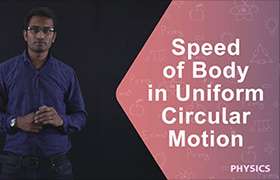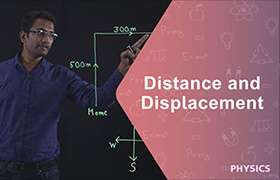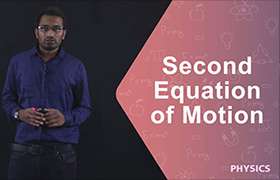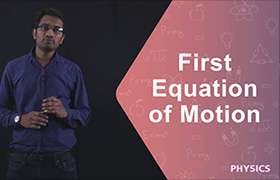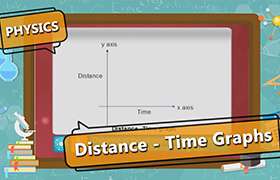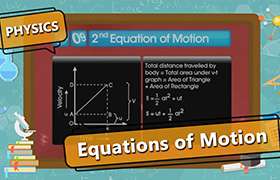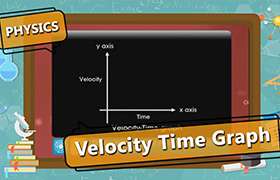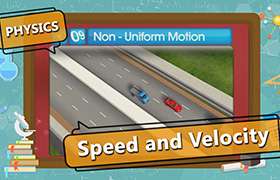CBSE Class 9 Answered
A particle is moving in a straight line with initial velocity U and uniform accerleration A. if the sum of distances travelled in Tth & (T+1)th second is 100 cm. Then find its velocity after T second in cm/s
Asked by SIDDHARTH SHARMA | 24 Nov, 2014, 11:08: AM
We know that the distance travelled in nth second of uniformly accelerated motion is:

where u is the initial velocity and a the uniform acceleration of the body.
In this case given that the sum of distances travelled in T th & (T+1) th second is 100 cm
i.e.
S T +S T+1 =100
If the particle is moving with initial velocity U and uniform accerleration A,
Distance travelled by the particle in Tth second can be written as:

According to the equation of motion, we know that v = u+at
where v is the final velocity, u is the initial velocity, a the acceleration and t the time.
So comparing the equation U+AT =50 with the the equation of motion v= u+at
we get that the final velocity of the particle at T second = 50 cm/s
Answered by Jyothi Nair | 25 Nov, 2014, 09:27: AM
Application Videos
Concept Videos
CBSE 9 - Physics
Asked by mailtoparvathyprajith | 06 Feb, 2024, 09:50: PM
CBSE 9 - Physics
Asked by mailtoparvathyprajith | 06 Feb, 2024, 09:10: PM
CBSE 9 - Physics
Asked by sapnamantri05 | 24 Nov, 2023, 04:54: PM
CBSE 9 - Physics
Asked by ashrithpandu84 | 09 Oct, 2023, 08:09: PM
CBSE 9 - Physics
Asked by janhavisoni2099 | 02 Oct, 2023, 05:20: PM
CBSE 9 - Physics
Asked by durgesh21332 | 06 Sep, 2023, 06:17: PM
CBSE 9 - Physics
Asked by sagrawal0081 | 18 Aug, 2023, 05:04: PM
CBSE 9 - Physics
Asked by ketkiparasgandhi | 05 Jul, 2023, 08:02: PM
CBSE 9 - Physics
Asked by leena3732 | 15 Jun, 2023, 09:42: AM

